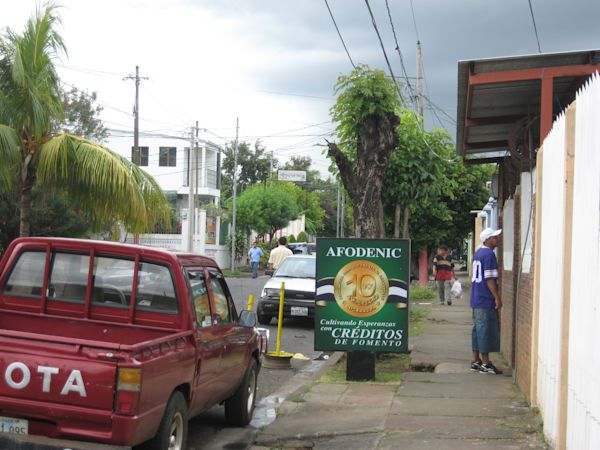
By Victoria Kabak, KF9, Nicaragua
In one of our training sessions for the 9th class of Kiva Fellows at the end of September, a staffer told us that we might be living and working during our fellowships in places without street signs–because the streets are unnamed. He described how, in small towns, a direction might be given simply as “past the banana tree” or something similar. He even had a hand-drawn map that he got when he visited one of Kiva’s partners; the microfinance institution had sketched the diagram to indicate the locations of its clients, since they didn’t have addresses.
I was very interested in his anecdotes and expressed a degree of fascination along with my fellow trainees. In thinking about the challenges we all might face as Kiva Fellows, this particular obstacle hadn’t occurred to me. But I was going to the capital city of a country, not a small rural village. It was certainly intriguing to hear, but it wasn’t going to be directly relevant to me, I thought.
So I did a double take when I was reading my guidebook during the second of my two plane rides to Managua earlier this month and came across the piece of information that most streets in the city don’t have names. The guidebook had highlighted it in one of those boxes, for visitors to take special note. Addresses are given in relation to the nearest landmark, followed by some number of “cuadras” (blocks) to travel al lago (north), al sur (south), abajo (west), and/or arriba (east). (Those last two are based on the sun, which goes arriba in the east and abajo in the west.) In order to be more precise, addresses also sometimes include a number of “varas,” a Spanish form of meters (Wikipedia has deemed this unit of measurement “obsolete,” but I’d tend to disagree after being in Managua for three weeks), to signal how far down the block to go.
To explain by example, the location of the administrative offices of AFODENIC, the microfinance institution where I’m a Kiva Fellow, is indicated in relation to the nearby Banco de Finanzas branch; from there, it is one cuadra al lago, two cuadras arriba, and 20 varas al sur. AFODENIC’s nearest sucursal, or branch, is down the block–one cuadra al lago and 1.5 cuadras arriba from the Banco de Finanzas. Fortunately, buildings are numbered, so that helps.
Thinking about it now, I’ve probably been to at least one place before where the streets have no names. But this was a small town, where almost any destination would be very near an easy-to-find location, like the market or the fire station or the elementary school. I had never imagined that a major city – the capital city of a country! – might not have names for its streets. Especially as a native New Yorker, it seemed almost silly to entertain the notion of what it would be like if our addresses were something like “10 blocks south of the Empire State Building, 3 blocks toward the East River.”
You might think that a capital city without street names and with more than 1 million inhabitants might be stressful and chaotic. But the thing is: it works. One of the lessons I’ve already learned – in a number of respects – from my time in Nicaragua is that you can get used to anything. When not having street names is the norm, you become accustomed to it. It’s just a fact of life.
And while it wasn’t something that had occurred to me before I got here – and maybe it’s hard for you to imagine too – what ultimately matters is locating the clients. As long as microfinance institutions are identifying and reaching out to the people in need, whether they find them with a homemade map or with directions based on the sun, who needs street names?

This is the street where my MFI, AFDOENIC, is located. It doesn't have a name.
* * *
Victoria Kabak is currently a Kiva Fellow at AFODENIC in Nicaragua. Lend to current AFODENIC borrowers on Kiva now, or join the AFODENIC lending team!
/>PREVIOUS ARTICLE
A Stockpile of Dollars: How to Deploy Kiva Funding →NEXT ARTICLE
Dreaming of Dar →













